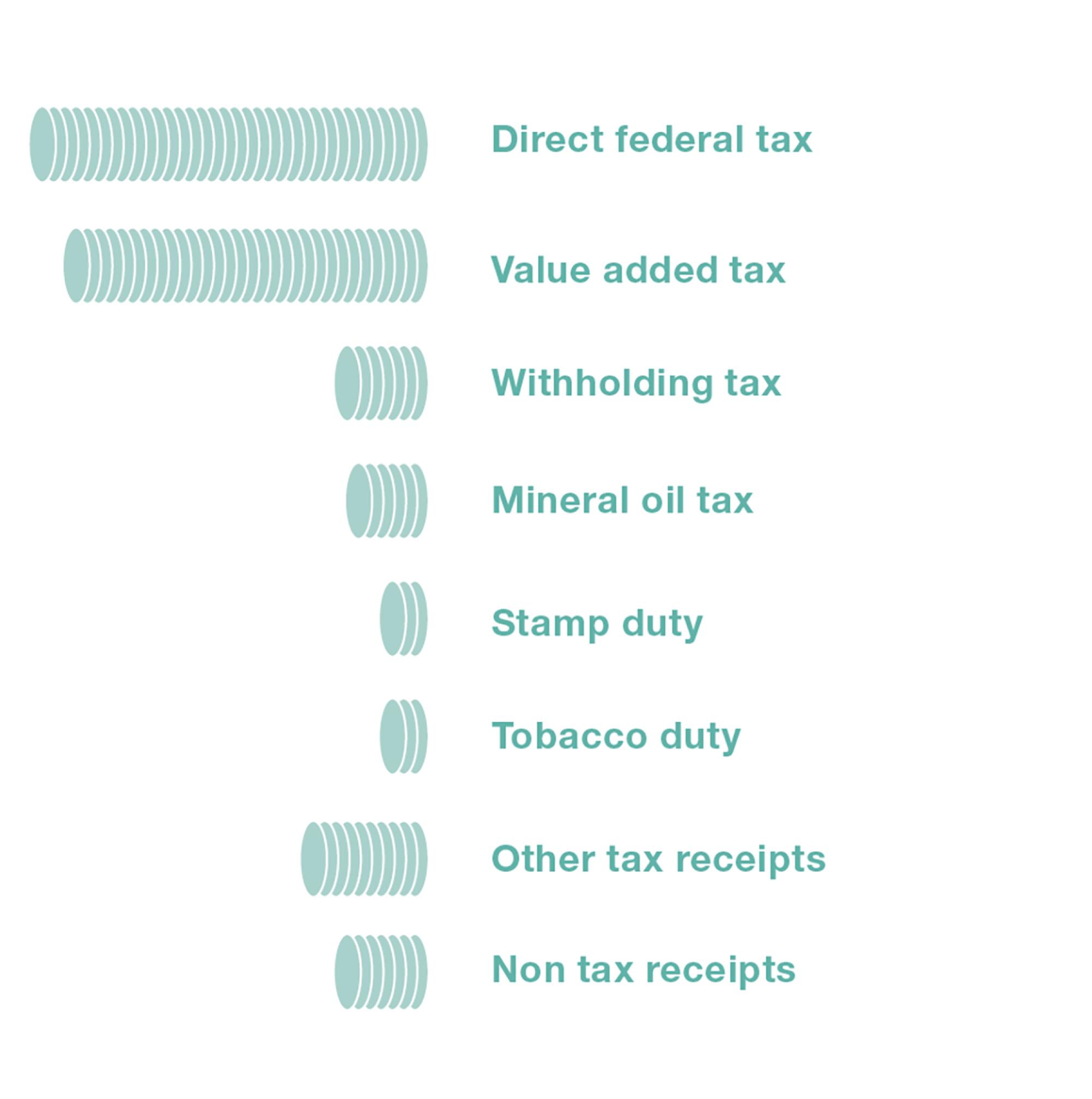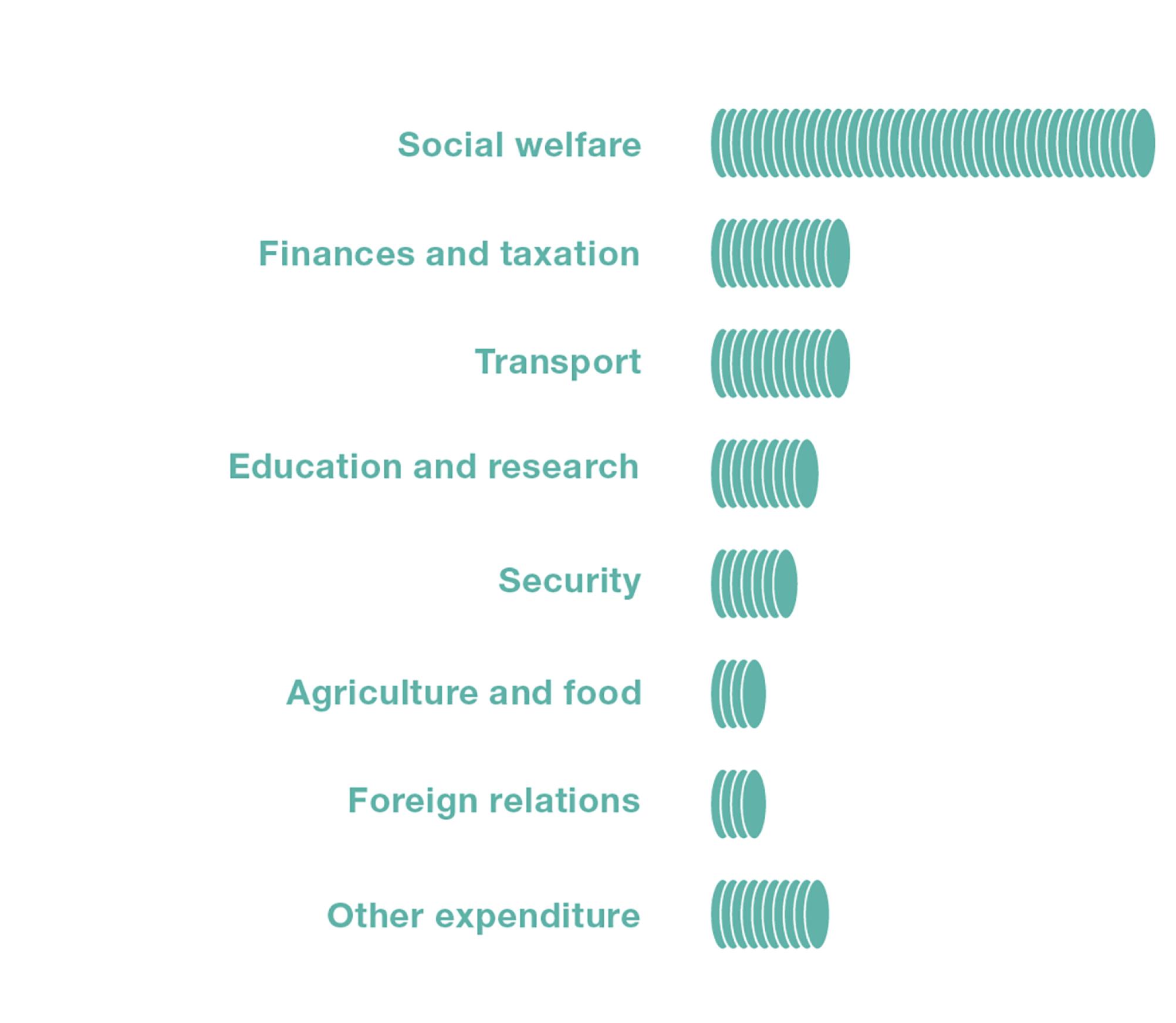The Government
The
Federal Council is Switzerland’s government. It consists of seven members, who take decisions and defend their decisions in a
collegial manner. The presidency rotates every year. The Federal Council is assisted
in its tasks by the Federal Administration. The Confederation’s expenditure may
not exceed its receipts over the longer term: this is ensured by the debt brake
mechanism. The budget is decided by Parliament.
Federal finances: Parliament has the final say
In order
to fulfil its tasks, the Confederation needs money. The Federal Constitution
sets out what taxes the government can raise. When it comes to spending money,
the Federal Council cannot just do as it sees fit: there is a legal basis for
every item of expenditure that is the result of a democratic process.
Parliament
has sovereignty over federal finances: it decides the budget and approves the
state financial statement of the previous year.
Debt
brake mechanism
The Confederation is required
to balance its expenditure and receipts over the longer term. It is required to
run a surplus when the economy is thriving and may spend more than it collects
in receipts when the economy is weak. The debt
brake does allow for an exception to be made in extraordinary situations such as serious economic crises and
natural disasters; the government may then undertake additional expenditure.
Extraordinary expenditure
The
COVID-19 pandemic has resulted in one of the most serious economic downturns in
recent decades. To help the economy and the public, the
Federal Council and Parliament passed support measures to the tune of tens of
billions of francs. At the same time the Confederation faces a shortfall in
receipts. Thanks to its low public debt, Switzerland and the Confederation in particular are
in a sound financial situation.
Federal receipts and expenditure 2020

Receipts of 72
billion
The federal government's main
sources of receipts are direct federal tax and VAT. Direct federal tax is
raised on the income of private individuals (progressive, max. 11.5%), and on
business profits (8.5%). VAT is 7.7% on most goods and services.

Expenditure of 87.8 billion
The Confederation dedicates 41% of federal expenditure to social
welfare. Half of that goes towards old age pension provision (OASI), and a
sixth to invalidity insurance (II). In 2020 this also included
funds to tackle the consequences of the COVID-19 pandemic. i.e. short-time
working compensation (10.8bn) and Corona loss of earnings compensation (2.2bn).
Political party composition of the Federal Council since 1948

1848
The Federal
Council was composed of seven members of the Free Democratic Party (today FDP.The
Liberals). The party governed alone for 43 years.
1891
The first member of the
Catholic Conservatives (today CVP) joined the government; the second joined in 1919.
1929
Parliament elected a member of the Farmers’, Trades’
and Citizens’ Party (today SVP) to the Federal Council.
1943
The first Social
Democrat (SP) entered the government; the second followed in 1951.
1959
The four strongest parties agreed to form a
government by applying the ‘magic formula’:
2 FDP, 2 CVP, 2 SP,
1 SVP. The formula remained unchanged for 44 years.
2003
At the Federal
Council elections, the SVP won a seat at the expense of the CVP.
2008
The two
representatives of the SVP joined the newly founded Conservative Democratic
Party (BDP).
2009
A member of the SVP was elected in place of a
retiring BDP representative.
2015
The BDP
representative stepped down. Parliament elected an SVP representative in her
place.
Since then
The Federal Council has again been composed of members from four different
political parties – according to the 2:2:2:1 formula.